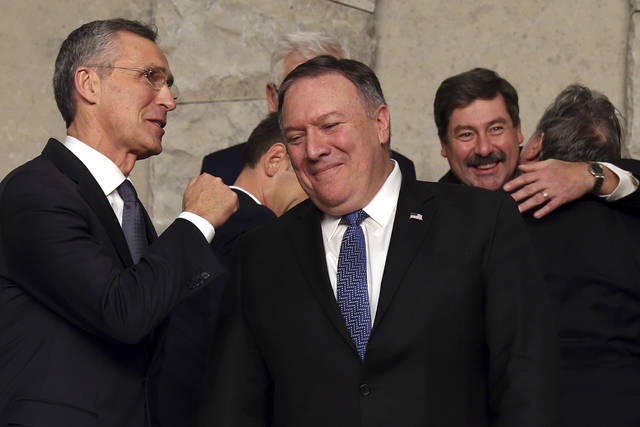Pat Buchanan: At age 70, time to rethink NATO
“Treaties are like roses and young girls. They last while they last.”
So said President Charles de Gaulle, who in 1966 ordered NATO to vacate its Paris headquarters and get out of France.
NATO this year celebrates a major birthday. The young girl of 1966 is no longer young. The alliance is 70 years old.
And under this aging NATO today, the U.S. is committed to treat an attack on any one of 28 nations from Estonia to Montenegro to Romania to Albania as an attack on the United States.
The time is ripe for a strategic review of these war guarantees to fight a nuclear- armed Russia in defense of countries across the length of Europe that few could find on a map.
Apparently, President Trump, on trips to Europe, raised questions as to whether these war guarantees comport with vital U.S. interests and whether they could pass a rigorous cost-benefit analysis.
NATO is celebrated as “the most successful alliance in history.” Some of us can yet recall its beginnings.
In 1948, Soviet troops, occupying eastern Germany, imposed a blockade on the city.
The regime in Prague was overthrown in a Communist coup. Foreign minister Jan Masaryk fell, or was thrown, from a third-story window to his death. In 1949, Stalin exploded an atomic bomb.
As the U.S. Army had gone home after V-E Day, the U.S. formed a new alliance to protect the crucial European powers — West Germany, France, Britain, Italy. Twelve nations agreed that an attack on one would be treated as an attack on them all.
Cross the Elbe and you are at war with us, including the U.S. with its nuclear arsenal, Stalin was, in effect, told. Hundreds of thousands of U.S. troops returned to Europe to send the message that America was serious.
Crucial to the alliance was the Yalta line dividing Europe agreed to by Stalin, FDR and Churchill at the 1945 Crimean summit on the Black Sea.
U.S. presidents, even when monstrous outrages were committed in Soviet-occupied Europe, did not cross this line into the Soviet sphere.
Beginning in 1989, the Berlin Wall was torn down, Germany was united, the Red Army went home, the Warsaw Pact dissolved, the USSR broke apart into 15 nations and Leninism expired in its birthplace.
As the threat that had led to NATO disappeared, many argued that the alliance created to deal with that threat should be allowed to fade away, and a free and prosperous Europe should now provide for its own defense.
It was not to be. The architect of Cold War containment, Dr. George Kennan, warned that moving NATO into Eastern Europe and former Soviet republics would prove a “fateful error.”
This, said Kennan, would “inflame the nationalistic and militaristic tendencies in Russian opinion” and “restore the atmosphere of the Cold War in East-West relations.” Kennan was proven right.
America is now burdened with the duty to defend Europe from the Atlantic to the Baltic, even as we face a far greater threat in China, with an economy and population 10 times that of Russia.
Trump is president today because the American people concluded that our foreign policy elite, with their endless interventions where no vital U.S. interest was imperiled, had bled and virtually bankrupted us, while kicking away all of the fruits of our Cold War victory.
Halfway into Trump’s term, the question is whether he is going to just talk about halting Cold War II with Russia, about demanding that Europe pay for its own defense and about bringing the troops home — or whether he is going to act upon his convictions.
Our foreign policy establishment is determined to prevent Trump from carrying out his mandate. And if he means to carry out his agenda, he had best get on with it.
Pat Buchanan is the author of “Nixon’s White House Wars: The Battles That Made and Broke a President
and Divided America Forever.”
Pat Buchanan is author of "Nixon’s White House Wars: The Battles That Made and Broke a President and Divided America Forever."
Remove the ads from your TribLIVE reading experience but still support the journalists who create the content with TribLIVE Ad-Free.

